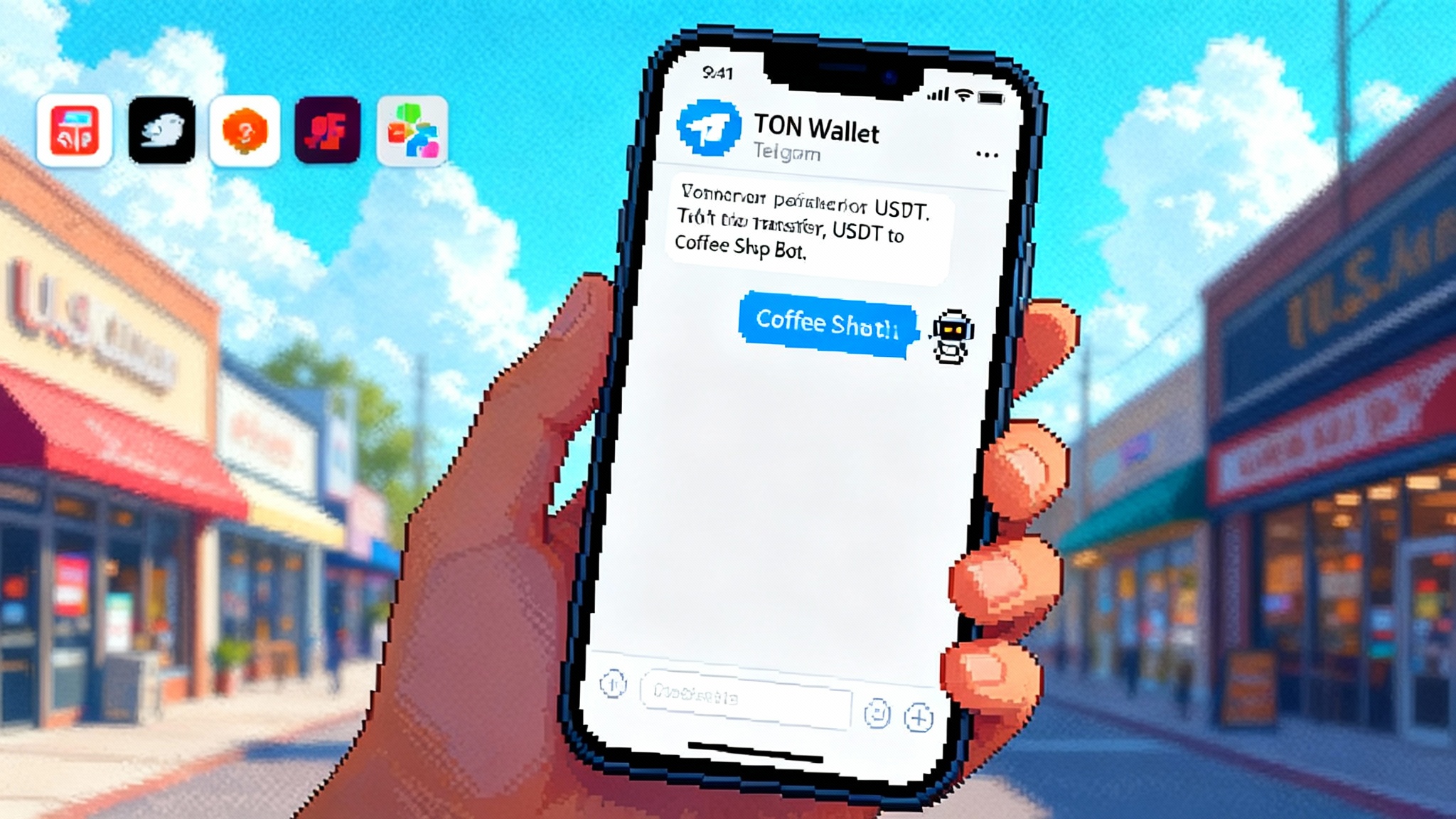Solana’s First U.S. Spot ETF With Staking Opens The Floodgates
Bitwise’s BSOL launched under September’s generic listing standards and included on-chain staking from day one. Here is how a quiet rule change set off an altcoin ETP race, and what the next year could mean for flows, validator policy, custody, and tax.

What just happened
A quiet rule change in mid September set the table for a loud result in late October. The United States Securities and Exchange Commission approved so-called generic listing standards that let stock exchanges list certain commodity-based exchange traded products that hold spot assets, including digital assets, without filing a bespoke rule change for each new product. In plain English, if a product fits the published template, the exchange can list it after basic checks instead of waiting months for a fresh approval. The rule change was formalized on September 17, 2025 and it is the reason a Solana product could appear so quickly in New York. You can read the Commission’s own summary in the SEC approval of generic listing standards.
In late October 2025, Bitwise used that road. The firm listed the Bitwise Solana Staking ETF with the ticker BSOL on the New York Stock Exchange. It holds Solana directly and stakes those holdings on chain. Bitwise set a 0.20 percent management fee with an initial waiver and described an in-house staking setup supported by Helius in its launch materials. For the basic mechanics and disclosures, see Bitwise launches BSOL ETF. The firm framed expected staking rewards around seven percent, explained custody and staking workflow, and spelled out how rewards are intended to accrue to shareholders.
The headline is simple. The first United States spot Solana exchange traded fund arrived with staking inside the wrapper. The more interesting story is what that unlocks and what it pressures across the market over the next year.
Why staking inside a public fund is a big deal
An exchange traded product that holds a proof-of-stake asset can earn protocol rewards by delegating to validators. Think of it like a bond fund that also earns occasional extra coupons because it helps run the market’s plumbing. In practice, a staking fund must answer three questions that a regular commodity trust can ignore.
-
How do rewards flow to investors. Funds can either accrue rewards into net asset value and pay them out periodically as distributions, or keep them inside the portfolio and let them compound. Either way, the fund’s share count does not change, but the composition of its assets does. A Solana-based fund that stakes will accumulate additional Solana over time, minus validator commissions and fund expenses.
-
Who controls the vote. Staked Solana is voting power. Even if a fund says it does not vote on governance proposals, its delegation choices affect who does. That makes validator selection a fiduciary policy decision, not just a technical one.
-
What happens on the bad days. Staking is not risk free. Slashing and downtime penalties exist, rare but real. A fund needs policies for validator diversification, monitoring, and incident response.
These are solvable problems. They are also the reasons BSOL matters more than a simple price tracker. It is a template for how yield and governance touch public markets.
How it slipped through, fairly and fast
Under the generic listing standards, an exchange can list a commodity-based trust share that holds a spot commodity if the product fits a prescriptive set of requirements. Those requirements include rules on the underlying reference pricing, the index or pricing source used for valuation, daily transparency, and surveillance sharing agreements. Importantly, the new template explicitly covers digital assets treated as commodities. The shift is procedural, not ideological. It does not pronounce on whether every crypto product is wise. It says that if a product fits the drawer, the exchange can file the paperwork to place it on the shelf. For a broader policy backdrop on how Washington is standardizing crypto market rails, see our America's Stablecoin Law field guide.
Bitwise built a fund that fit the drawer. That is why BSOL could start trading quickly. The legal nuance matters because it explains why competitors that had been waiting on bespoke approvals are now retooling their filings. The race is not to the politest line anymore. The race is to the cleanest fit.
The six to twelve month ripple effects
1) Flows versus on-chain staking
Expect three distinct buyer groups to test BSOL-style products over the next two quarters.
- Registered investment advisors who want clean brokerage access and simple tax documents for clients. These buyers often avoided self-custody and token transfers. A ticker solves that and lets them rebalance across accounts in seconds.
- Retail investors who held liquid staking tokens and want to move into a single account experience inside their brokerage or retirement plan. Fee waivers and a marketing tailwind will attract this group.
- Quant and macro funds that already trade the Bitcoin and Ether exchange traded products. These funds care about tight spreads, reliable creations and redemptions, and predictable basis in futures. If secondary market liquidity builds, they will come for the basis trades.
As flows arrive, staking dynamics will adjust. When a fund stakes a large block of Solana, it increases the percentage of supply that is locked. That can reduce nominal yield for everyone, since rewards are shared across more staked coins. At the same time, funds tend to negotiate lower validator commissions and select high-performance operators. That can boost net rewards inside the fund relative to the network average. The net is a squeeze for some independent validators and a tailwind for the best operators.
For on-chain participants, the practical question is whether liquid staking tokens lose share to listed products. Over six to twelve months, expect a barbell. Brokerage-only accounts will lean into exchange traded products. On-chain users who want DeFi composability will keep liquid staking tokens. The middle group will pick based on taxes and convenience.
2) Validator concentration and governance
Staking from large funds can concentrate delegation in the operators that meet institutional checklists. That list includes uptime, jurisdiction, insurance, hardware transparency, and reporting cadence. In the short run, that will push more stake toward the largest and most professional validator firms. In the medium run, it can improve network reliability because those firms run tight operations and invest in monitoring.
The tradeoff is influence. A handful of fund-approved validators could end up with meaningful voting power. That does not mean those validators will vote against the community. It does mean their policy choices matter, and that index-like asset managers will be expected to publish stewardship policies for staking the same way they publish voting policies for corporate proxies. Europe’s experience with fund infrastructure is instructive; see how Europe’s tokenised funds take off when disclosure standards harden.
A practical way forward is simple and public. Issuers can publish a validator stewardship policy that sets thresholds for any single validator’s share of fund stake, lists diversity goals for geography and client software, and commits to a regular rebalancing cadence with reasons for changes. They can also disclose whether they will vote, abstain, or delegate governance rights to a neutral mechanism. Clarity will reduce drama and help the network diversify rather than concentrate.
3) Custody and tax quirks of passing through staking yield
Custody will follow the template set by spot Bitcoin and Ether products. Cold storage at a qualified custodian. Segregated accounts. Clear slashing insurance terms. The new twist is how staking rewards are treated. For a commodity-based trust, rewards earned in kind are not like a stock dividend. The trust receives new units of the commodity, which increase the portfolio and net asset value. When the fund makes distributions, shareholders will generally receive a Form 1099 from their broker that characterizes the cash as ordinary income or other income. If the fund does not distribute and instead reinvests, the tax treatment depends on the structure of the trust and how rewards are recognized at the trust level. That is why issuers have been careful to explain how and when rewards will be reflected in net asset value and whether periodic distributions are expected.
Investors should expect two practical outcomes in the first year. First, net asset value will drift upward relative to price exposure alone when staking is active, and investors will see either periodic cash distributions or a year-end distribution that reflects rewards net of expenses. Second, cost basis tracking will matter. If the fund sells a small amount of Solana to pay fees or to rebalance, that generates taxable events inside the trust that flow through to shareholders on 1099s. None of this is exotic, but it is different from holding Solana directly, where you control the timing of sales and where staking rewards are picked up as income when you control them.
4) Liquidity and the creation and redemption playbook
For market makers and authorized participants, the staking feature adds two operational wrinkles. Creations and redemptions need unstaked tokens. That means the fund must keep a small buffer of liquid Solana or accept cash creations where the administrator buys Solana and stakes it on a set schedule. Either way, the fund will run a cash and staking management program. On volatile days, that program becomes the heartbeat of spreads. If the fund lets staked balances accumulate too close to the maximum, redemptions can get sticky. Expect issuers to publish a daily staked percentage and a target range, similar to liquidity buckets in bond funds.
The second wrinkle is slashing. A slash prompts a status update and a policy-driven response. Funds can cover a small slash with expense caps or insurance, or they can let the event flow through net asset value. The policy choice should be disclosed up front because it affects tracking.
5) The competitive response from Grayscale, VanEck, Fidelity and others
Once the drawer exists, more products will try to fit it. Expect Grayscale, VanEck, Fidelity, and others to move quickly to list Solana and a short list of large-cap alternatives. Some will stake, some will not. The initial competition will be about fees and spread quality. The second wave will be about product design. A neutral staking charter may help win advisor platforms. A diversified index that includes Solana next to other high-throughput chains could appeal to retirement plans. An income-oriented share class that pays out staking rewards monthly will appeal to yield-oriented accounts.
Fees will compress fast. A simple reason is that staking adds a revenue line the issuer shares with investors. That allows lower management fees without starving the business. The realism check is that in crypto, spreads and creation friction can matter more than fee decimals for total cost of ownership. Watch the lead market makers on day one of any new listing. If they are present and quoting tight markets, the product will work for institutions.
Why Solana’s technical arc matters for an ETF buyer
The arrival of exchange traded funds for a blockchain changes how its technical roadmap affects mainstream investors. For Solana, two infrastructure themes drive the story.
- Client diversity. Solana has moved from a single dominant validator client to an ecosystem with independent implementations. New clients aim to improve performance under load and reduce the odds that a single software bug can pause the chain. Early mainnet adoption by alternative clients has been modest but real and is expected to climb over the next year as operators gain confidence.
- Higher compute unit limits and throughput headroom. Solana’s network leaders increased per-block compute capacity in mid 2025 and have been openly discussing larger or more dynamic limits. Higher limits mean more room for activity without congestion. For an exchange traded product investor, this matters because network reliability reduces the odds of extreme priority fee spikes that could distort staking economics. In short, better plumbing reduces the noise in the yield.
Put these together and you get a network that is aiming at more consistent throughput, more resilient software diversity, and a fee market that remains low for typical transactions. If the infrastructure continues to improve, the case for a staking product becomes stronger because staking rewards depend on a steady machine rather than a bursty one. For how cross-chain security narratives are evolving alongside staking, see our Bitcoin Starts Securing Chains analysis.
Concrete watch list for the next year
If you advise clients, operate validators, or run product at an asset manager, here is a short list to monitor.
- Exchange rule bulletins. When exchanges update their generic listing bulletins for digital asset products, look for any language about staking caps, reporting of staking percentages, or custodial qualifications. Small changes in templates can shape product design.
- Daily fund dashboards. Treat staked percentage, validator count, and validator diversity as core metrics alongside assets and volume. Issuers should update these daily. If they do not, ask for it.
- Distribution policy. Does the fund accrue rewards and pay quarterly, or pay monthly. Does it disclose the character of distributions. Income-oriented accounts will care.
- Validator stewardship policy. This is the biggest governance improvement issuers can make. Look for a published policy with thresholds, diversity targets by geography and client software, and a cadence for rebalancing. Bonus points for a standing committee that includes independent operators.
- Slashing and downtime incidents. A single incident is not a scandal. A pattern is. Track whether the fund’s validators are concentrated with the same provider or cloud and whether incidents cluster. Diversity matters.
- Fee and spread scorecard. The difference between a 0.19 percent fee and a 0.24 percent fee is smaller than a 20 basis point spread. Watch the market quality statistics and the number of active market makers on screen.
- On-chain APR versus fund net yield. If on-chain annual percentage rewards fall because more stake is locked, a fund with good validator selection and low commissions can still deliver a net yield that exceeds the network average. Compare them over rolling windows.
- Governance posture. When a hotly debated proposal comes to a vote, does the issuer abstain, split delegation, or delegate to a neutral mechanism. The first time this happens will set a precedent.
- Cross-product arbitrage. If futures listed on regulated venues for Solana grow in volume, authorized participants gain better hedges. That tightens spreads. You will see it most clearly on volatile days.
- The second wave of products. As Grayscale, VanEck, Fidelity and others list their versions, note who chooses to stake, who publishes a stewardship policy, and who treats staking as an income product with a cadence investors can rely on.
What this means for different players
- For financial advisors. You can now place a Solana allocation in the same sleeve as your other exchange traded products and keep rebalancing simple. The homework is about taxes and stewardship. Read the prospectus section on distributions and the validator policy. Then communicate those items to clients the way you would with a dividend policy or a proxy voting policy.
- For validators. The bar just went up. Institutional stake will push expectations for uptime, reporting, and security controls. Publish your fee policy, share of tips, and your client software mix. If you are smaller and specialized, differentiate by geography or hardware mix. Funds want diversification, not just size.
- For on-chain users. Nothing stops you from staying native. If you value composability in decentralized finance and direct control of tax lots, liquid staking tokens will remain attractive. If you value brokerage convenience and consolidated reporting, the exchange traded product may win. Pick based on your workflow and tax profile.
- For regulators. Generic listing standards lowered friction without lowering the bar. The next task is straightforward. Encourage consistent disclosure around staking. Stated simply, require simple dashboards for staked percentage, validator counts, and validator diversity so that end investors can see where their voting power lives.
The bottom line
Generic listing standards turned a theoretical green light into a practical on-ramp. Bitwise drove a Solana fund through it first, and it brought staking along for the ride. Over the next year, the real competition will not be about who launches. It will be about who earns trust by treating staking as stewardship, not just income. Watch policy, not just price. In markets, the rules you choose become the results you get.








